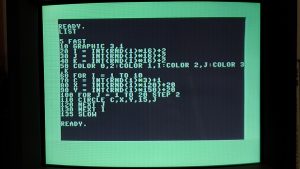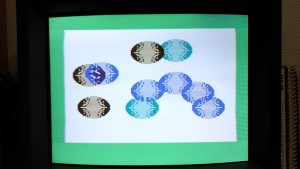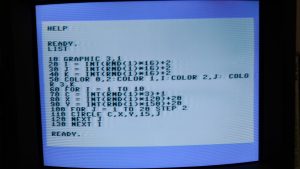Just a personal experiment out of curiosity. I wrote this little program on my Commodore 128 and then again on my Commodore 16.
I was curious about the speed:
3rd place: Commodore 128 executed the code in 1 minute, 55 seconds before adding lines 5 and 135.
2nd place: Commodore 16 executed the code in 1 minute, 34 seconds.
1st place: Commodore 128 executed the code in 55 seconds after adding lines 5 and 135.
So clearly lines 5 and 135 are key. The FAST command blanks the screen and doubles the CPU speed. Output is revealed after the SLOW command is issued. This is only useful in 40-column mode. In 80-column mode, the CPU is always double speed!
I was also surprised by the color palette selected on the 16. I’m pretty new to the 264 series of computers. I know it has a bigger selection of colors than the 128. It seems like you can access more vibrant colors by issuing a third argument to the COLOR command. The default 16 colors in the graphic mode seem so… Easter-ish.





Interesting to read that the C128 has a FAST command like the good old Sinclair ZX80/81… I wasn’t aware it was implemented in other machines.
Not sure if it’s exactly the same or not, but yeah, the command exists. It blanks the screen so the CPU doesn’t have to sync down to the VIC-II’s speed.
Actually, FAST is NOT automatically enabled in 128 80 column mode, you have to issue it… But when you do, since the VDC is in charge of the display and not the VIC, you don’t lose the screen… So it’s most useful to run FAST in 80 column mode for anything where you need to do processing AND have some interaction with the user.
There’s a way to do FAST and slow on the C64 as well, but you have to use poke commands to invoke it.